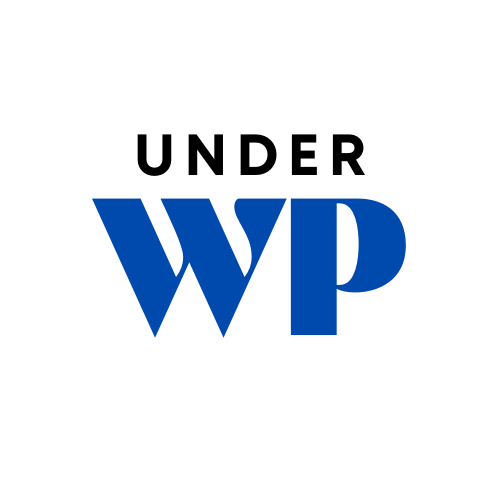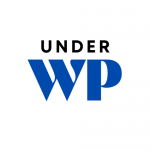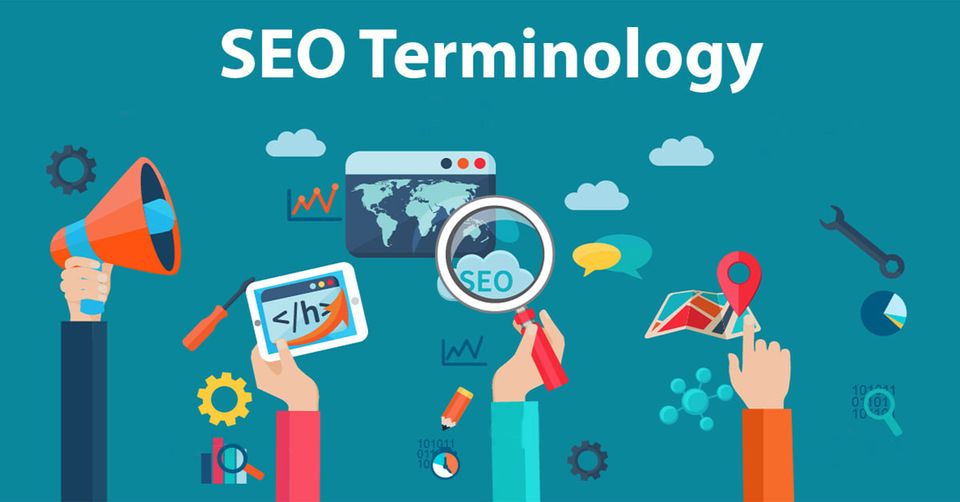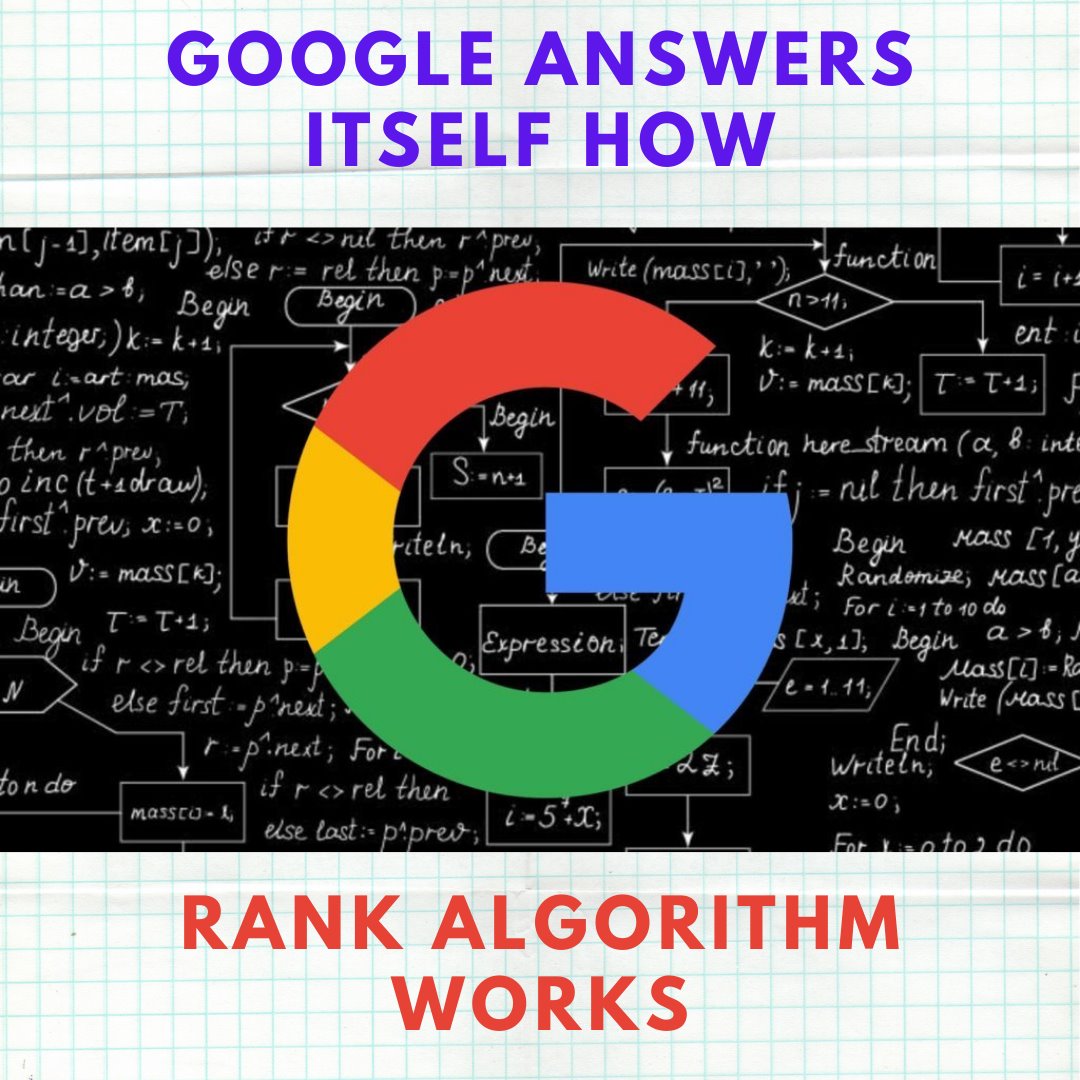Have you ever had the impression that people like lawyers and stock traders cover a lot of mundane practice behind their lingo as if they were speaking in a different language? That is partially real, but don't be fooled: some of the fancy languages facilitate fast communication among knowledgeable professionals.
Similarly, SEO is a distinct discipline with its own terminology, as with many academic fields. If you're an SEO expert, you're probably not interested in reading this. You've come to the right place if you're a WordPress user who has just started to work with SEO professionals or just wants to learn more about search engine optimization and its vocabulary.
I have tried my best to collect the most widely and sometimes rarely used SEO terms here. Some of these terms might have different meanings with different companies or registrars. Let's get started.
Numeric 0 – 9
10 blue links (Top 10 Results): These are the search results on the first page. Usually search engines like Google show 10 results on first page plus advertisements. We SEO's call it the Top 10 Results also.
1XX Status Code: If you see a page showing something like 100 – 199 code, it means the server has received the request for that page.
2XX Status Code: If you see a page showing something in between 200 – 299 code, it means the server has successfully received the request and accepted it.
301 Redirect: It is a very popular method used by webmasters to redirect a page or domain to another location using this code to indicate to the search engines that the present location showing this code has been moved to another location.
3XX Status Code: If you see a page showing something in between 300, 302 – 399, it means the server needs further action to be completed.
4XX Status Code: If you see a page showing something in between 400 – 499, it means the requested page on the server has resulted in an error.

406 Not Acceptable HTTP Status Code: This error happens when the server is unable to understand and server the accept-header part of the request made by the visitor's browser. This kind of error happens between the hosting application and the hosting server. The website visitor can only wait the server to be fixed.
5XX Status Code: If you see a page or website showing a status code between 500 – 599, it means the server of the website failed to fulfill this request.
A
Authority: A class of websites or pages defined by search engines inside their algorithms.
Alt Text: Images need definition, these Alt Tags/Text provide definition to the images.
Algorithm: A computer program used by search engines to define and sort websites.
Anchor: An HTML element like text, button, image which is visible to the website visitors and links to another website or page.
B
Blog: A website where you can share information with the world digitally.
Bot: An automated computer program to perform a set of tasks like crawling websites and their content.
Backlink: The most used term in the SEO world. A link from one website to another website. These can also be called Inbound Links. They are an important part of a link building strategy.
Black Hat: Shady techniques which are not according to the search engine's guidelines.
Bounce Rate: This is an important ranking factor in digital marketing activities. The relation between the total number of visits to a website to the visits did not result in a particular action of that website. Like shopping online. The total number of visitors to a product page and the total number of visitors actually buying the product.
Browser: A software or app which allows the user to access a website and its features.
Broken Link: A link or a backlink which results in a 404 error code in the browser.
C
Click-through Rate: Relation between the total number of impressions a website/ad/page/product gets on a search engine or any other online webpage to the total number of clicks for this website/ad/page/product/link.
Cache: A temporary memory allocated to a website by the browser for faster loading of that website.
Cached Page: A cache of the page saved by a bot or browser for quick access.
Conversion: When a visitor of the website performs an action on the website like opt-in for a newsletter is called a conversion. In this case, it will be called subscription conversion.
Conversion Rate: The relation between the total number of visitors to the total number of conversion actions performed on the website.
Canonical URL: When a code element is used to specify a preferred URL of a website.
Crawler: A bot which has been designed specifically for crawling websites.
Crawler Directives: Set of instructions from a webmaster to the crawlers whether to index or not any specific page of that website.
Crawling: The process followed by a crawler is called Crawling.
CSS: Full form Cascading Style Sheets, is the file responsible for styling of a webpage.
D
Domain: A website's name and address on the internet.
Domain Name Registrar: A legal entity that manages the registration of Domains. Check out our blog post on finding the best and affordable domain registrars: Find The Cheapest Domain Registration For Your Next Domain
Duplicate Content: Content which has been copied from other websites.
Deindexing: The website not being shown in the search engines.
DNS: Full form Domain Name Server. Translation of domain name to the IP address of the server where the website is hosted.
Dwell Time: The amount of time between a click on the website and going back to the search results.
E
External Link: Also called as Outbound Link. It is a link which takes the visitor of your website to another website.
E-commerce: An online shop for purchasing products and services.
Editorial Link: A link given by the Editor of the page or post of a website.
Engagement Metrics: Different kinds of methods used to check the interactions of a visitor on the website. It might include metrics like Dwell Time, Conversion Rate, etc.
F
Follow: A HTML element attribute placed for links helps the search engine crawlers that the page follows the link specified. It's an HTML way of saying followers of another link like how we follow others on Instagram, Twitter, or any other social network.
Faceted Navigation: User selected options for sorting and filtering of URLs on a website.
Featured Snippet: These are the latest content models of information/answers of the search shown by the search engines in their search results page itself without having to click on a link of a website. Sometimes this can be different from the content of top-ranking pages. It's the search engine algorithm's way of showing the best answer to the search query.
Fold: A cutoff point on a website beyond which the content is not visible to the visitor.
G
Google: The most popular search engine on the internet.
Google Quality Guidelines: Guidelines published on Google Blog to be followed by webmasters and SEO specialists for making their website better in the eyes of Google search engine bots.
Geographic Modifiers: Search terms which can be added to a search query to get results from a specified location only.
Grey Hat: SEO practices which doesn't follow Google search guidelines but doesn't completely ignores them.
Guest Blogging: Posting a blog on another website that is not owned by you. You are a guest on the website who likes to share their information.
H
Heading: Text placed inside heading tags of a webpage. There are 6 types of heading tags in total: H1, H2, H3, H4, H5, and H6. These carry different values on a webpage.
Hreflang: An HTML link attribute which tells the browser which language is being used in the linked page.
Head Term: Hard to rank popular keywords with a large volume of searches on search engines.
Hidden Text: A text not visible to the visitor of the website. Usually, its color or size is changed so that it's not visible to visitors but crawlers can crawl it.
HTML: Full form Hyper Text Markup Language. A programming language used to create frontend of websites and pages.
Homepage: Front or First page of a website is called its homepage. A basic website and seo terms for beginners to note.
HTTP: Full form Hypertext Transfer Protocol. A transfer protocol followed between a web browser and a website server.
HTTPS: Full form Hypertext Transfer Protocol Secure. Similar to HTTP protocol but in a secured way by using SSL certificates.
I
Image Sitemap: A sitemap having all the URL's of images of a website.
Image Compression: Reducing the size of an image. Also an important step in the image optimization methods.
Inbound Link: Also know as backlink. A link between two websites.
Index: A database of content.
Indexability: The ability of a website to be indexed by a search engine bot.
Indexing: Organizing of content found by the bots.
Indexed Pages: Web pages successfully crawled by a bot and show in the search engine results for search terms.
IP Address: Address of any internet connected device.
Intent: The reason behind the search of a user.
Internal Link: Link between pages of the same website.
J
JSON Format: It's a javascript notation for linked data. A structuring format liked by both developers and search engines.
Javascript: A computer programming language used on websites to make more attractive and user-friendly web elements. Not every javascript code is search engine friendly.
K
Keyword: a word or group of words to focus the content on a webpage. This helps the search engine sort out the ranking factors of a page.
Keyword Research: Research performed on a topic to find the keywords which are user and search engines friendly.
Keyword Cannibalization: When a website has different pages matching the same URL query is called keyword cannibalization. This is also a part of negative SEO effects for a website.
KPI: Full form Key Performance Indicator. Indicators used to gauge the performance of a website.
L
Link Building: A very important part of SEO campaigns. A process of building links from different websites pointing to your website.
Link: A connection between two websites on the internet. One of the many easy generic SEO terms for beginners to remember.
Landing Page: A page on a website designed and written for a specific product or service sales.
Lead: A person's contact information shared and willing to learn or buy a product/service.
Link Bait: An unethical way of attracting links from other websites.
Link Equity: The value of inbout links to a website.
Link Farming: When two or more websites linking each other or generating links automatically is called Link Farming. Not a good way to get links like this as search engines consider it a black hat way.
Link Exchange: When two website owners exchange links between their websites with an agreement.
Local Pack: Collection of local businesses in search engines.
Local Query: a search containing a geographic modifier like “near me”.
Log File: A file containing records of information related to any part of a website.
Long-tail Keywords: Search queries with long keywords usually containing more than two words.
M
Mobile-first Indexing: Pages on a website which are mobile friendly and easily indexed by the bots.
Metric: Any measurement of performance.
Meta Description: A brief description of a page on a website inside the meta tags of HTML. This is important for search engines as this information is usually placed beside the link of a page in search engine results.
Meta Tags: HTML element used to get a brief overview of the contents of a page.
Metadata: Data consisting of meta tags.
N
Negative SEO: A bad practices of SEO which results in bad rankings of a website.
Natural Link: A link from a website which finds the content of a page useful to be linked with.
Navigation: The act of a visitor browsing between pages of a website.
Navigational Query: A query of the visitor used to find directions to a specific location on a website or a map.
Niche: A specific area or industry of interest. One of the generic SEO terms for beginners.
Nosnippet: A HTML meta tag which directs the search engine bots to not to show the description of the link in search results.
Noarchive: A HTML meta tag that directs the search engine bots not to store any present or previous versions of a webpage.
Nofollow: A HTML link attribute that translates to say that the linked website is not being followed by the linking website.
Noindex: A HTML meta tag that directs the search engine bots not to index the website or a specific page in their search engine results.
O
Organic: Any result for which you don't have to pay. An SEO term for beginners to remember as it is used widely in discussions.
Orphan Page: A page with no links to it either external or internal links.
On-page SEO: SEO activities done on a page of a website which can make it suitable for good rankings in search engine results.
Off-page SEO: SEO activities done outside of a page of a website to make it suitable for good rankings in search engine results.
Outbout Link: It is also called as an external link. Linking a page of another website.
P
Page Speed: The total amount of time taken by a page to load in a web browser.
Pages Per Session: A metric to learn about a visitor viewing pages of a website in one session.
Page Title: The name of a page usually visible at the top of a browser when the page is actively being viewed by the visitor.
Page View: Any time when a visitor loads a page in their browser.
Pagination: Page tags used to show the visitor that other parts of the content can be accessed by clicking.
Paid Search: Getting your website on top of search engine results for a keyword by paying to the search engine company.
PHP: Full form PHP Hypertext Processor. It is a programming language used to perform different dynamic activities of a website.
Protocol: It defines the way the data is being sent between a server and a browser for a website.
Pay Per Click (PPC): A type of advertising where the advertiser pays for every click.
People Also Ask: A new feature by search engines showcasing similar questions related to the search term.
Personalization: Modifying search engine result pages based on user defined options.
Pruning: A method used to increase the performance of a website by removing the poorly performing pages.
Purchased Link: A link obtained from another website by paying for it.
Q
Query: A keyword or collection of words used in performing a search on search engines.
Quality Link: A backlink from a reputed website.
QDF: Full form Query Deserve Freshness. It is an action of search engines to get fresh results for a query.
Quality Lead: A lead which is very highly likely to become a paying customer.
Qualified Traffic: A traffic of a website related to the topic of its pages.
R
Referral: A visitor sent from one website to another website.
Reciprocal Linking: Two websites linking each other with agreed upon agreement.
Rank: A place for the page of a website.
Ranking: Sorting of a page's position based on the query.
Ranking Factor: A factor which results in the ranking of a website in search engine results.
Redirection: Transferring of a visitor from one place to another place on the internet.
Re-inclusion: When a website is included again in the search results.
Rel=canonical: A HTML tag that tells the crawlers to mark it as the original. It is important to avoid keyword cannibalization.
Relevance: Connection between the search query and the page content.
ROI: Full form Return of Investment. A measurement of performance in SEO.
Robots.txt: a text file placed in the main folder of a website to direct the search engine bots with specific instructions.
Resources Page: A page containing links to other pages or website useful for the visitor.
Rendering: A process of web browser reading and presenting the website information suitable for its user.
Responsive Design: A design which is also suitable for mobile and other screen sizes.
Rich Snippet: An enhanced view of a page on the search results showing more information than other websites.
S
Search Engine: A website which crawls websites on the internet and shows results close to the searched term for a user.
Search: An action performed to get results in the search engine.
Scraped Content: Content copying and appearing on other websites.
Scroll Depth: The amount of page used by the visitor.
Scraping: The action of copying the content and storing by the search engines is called scraping.
Search Engine Marketing (SEM): Actions to increase the visibility of a website in the search engine results. It is a part of digital marketing activities for a website.
Search Engine Optimization (SEO): A process of optimizing the website to show up in top results of a search engine query.
Search Operators: A special commands which can be used to show user defined results in the search results.
Seed Keywords: Main keywords describing a product or service.
SERP: Full form Search Engine Ranking Page. A page which shows up in search engine results for a query of a user containing results from different websites.
Search Volume: The number of times a search term is used by different users in a period of time.
Search History: Previous search queries performed by the user of search engine.
Search Form: A set of fields with different operations which can be used by the search engine to show results defined by the user.
SERP Features: Set of features are not just the regular search engine results.
Spider: A bot which crawls websites.
Spam: An unethical way of forcing a website to the visitor by use of not ethical ways.
Split Testing: A side-by-side comparison of website metrics to make it user friendly.
SSL: Full form Secure Sockets Layer. A digital certificate used by websites and browsers for secure information transfer.
Social Media: An online media mostly used by visitors to become social with other users.
Sitemap: A document with the map of website content in text format.
Sitelinks: Other page links of the same website appearing below the search result page of that website.
SSL Certificate: A digital certifcate protocol used to secure transfer of information over the internet.
Status Code: The response of the server for a website based on the kind of query made to it by the user.
Subdomain: A section of the website within a domain.
Structured Data: An organized data used to properly store the information.
T
Title: The main important heading of the the page.
Taxonomy: A user defined system for organizing the content of the website.
Thumbnail: The smallest version of an image.
Thin Content: Content with less value to its reader.
Title Tag: An HTML element which defines the title of a page.
Traffic: visitors of a website.
Traffic Rank: Ranking of a website compared to other websites.
TLD: Full form Top Level Domain. Extensions used after the website name its domain name.
Time on Page: The average amount of time spent by a user on a website.
U
URL: Full form Universal Resources Locator. A readable format address of a website.
URL Parameter: Additional strings added to the URL of a website.
Universal Search: A search engine ranking page generated from multiple websites for a search query.
Unnatural Link: A suspicious link for a website in the eyes of search engines.
URL Folder: A folder which can be accessed by its name after the URL name.
User Journey: Intended or expected journey of a user on the website.
UTM: Full form Urchin Tracking Module. A type of URL parameter to determine the effects of a link building campaign.
User-generated Content: Content generated by the user of a website.
Usability: The ease of using a website.
UX: Full form User Experience. The experience of a user for a website.
V
Vertical Search: A search with focus for a specific content or information.
Voice Search: A search performed by using the voice of the user.
Visibility: A website link in the search engine results.
W
Website: A collection of web pages in one domain name.
Web Page: A document of a website which can be viewed online.
White Hat: SEO activities performed as per the search engine guidelines.
Word Count: Total Number of words written on a page.
Webmaster Guidelines: Guidelines given by search engines to be followed by website makers when creating and updating a website.
WordPress: A content management system for managing and updating websites.
X
XML: Full form Extensbile Markup Language. One of the programming languages used by the search engines use to interpret data.
X-Robots Tag: A tag to define the way a website is to be indexed by the search engine robots.
Y
Yahoo: A popular search engine.
YMYL: Your Money and Your Life
Z
Zombie-content: Rehashing the content information again and again in different terms without any real value.
Final Words
This will help you get started with SEO lingo. There is no end to the terms as you go digging deeper in learning SEO. But these SEO terms for beginners are helpful to get you started. If I have missed out on anything important and basic, do let me know in the comments. I will try to update this post with any misses found.





Helpful for SEO newbies like me. Your starting SEO tutorials are a good read.
Thank you and Subscribe to our blog for more upcoming posts like this.
Everyone loves what you guys tend to be up too. Such clever work and reporting! Keep up the very good works guys I’ve included you guys to my own blogroll.
Wonderful information. I am looking for creating a blog for my chocolate products website CocoaMantra, I will explore your suggestions and will settle with one.
Have you ever thought about writing an ebook or guest authoring on other sites? I have a blog based on the same subjects you discuss and would really like to have you share some stories/information. I know my visitors would value your work. If you’re even remotely interested, feel free to send me an email.
I’m curious to find out what blog system you happen to be working with? I’m having some small security issues with my latest website and I would like to find something more safeguarded. Do you have any recommendations?
Good post. I learn one thing tougher on completely different blogs everyday. I prefer to make use of some with the content on my weblog if you dont mind. Natually provide you with a hyperlink on your web blog. Thanks for sharing.
Really Appreciate this article, can I set it up so I receive an email sent to me when there is a new post?
Aw, this was a very nice post. A glossary of SEO terms. Very helpful. Keeping it as a reference.
Interesting
A to Z of SEO terms. Easy to find all the SEO glossary in one place.
Keep this list updated and it will be helpful for a lot of people new to SEo and digital marketing.